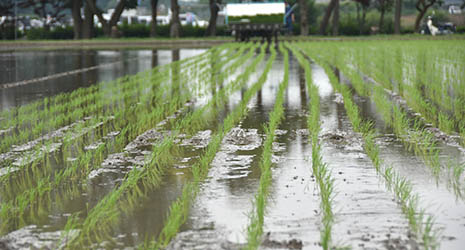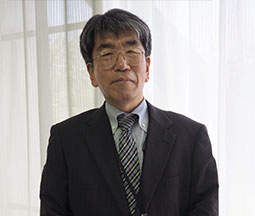Home > Highlighting JAPAN > Highlighting Japan May 2018 > Food and Agriculture Marketplace Potential
Highlighting JAPAN


The Future of Rice
In Japan, where rice is a staple food, research into selective breeding techniques is paving the way for new, more flavorful and easier-to-cultivate varieties.
Japan grows over three hundred varieties of rice, but only five make up two-thirds of the country’s planted rice fields. “Those five are the ‘brand’ breeds most popular with Japanese consumers, such as Koshihikari,” says Masayuki Yamaguchi, the selective breeding expert and director of the Division of Rice Research at the Institute of Crop Science, National Agriculture and Food Research Organization (NARO). “And actually,” he adds, “all five are variations on Koshihikari developed through selective cultivation.”
Japan began establishing agricultural experiment stations around a century ago, and experimentation in selective breeding technology for rice gained momentum in both national and prefectural centers. Since the Japanese archipelago stretches for about three thousand kilometers from northeast to southwest, its climate varies significantly, producing several distinct harvest seasons when the same variety is grown nationwide. One goal of selective breeding is to create optimized varieties that can be harvested most efficiently and with the highest yields in each region of the country.
Selective breeding involves planting seeds gathered by cross-breeding pollen from one breed’s stamen to the pistil of another, and selecting the full-grown plants that possess the desired characteristics. This selection process has to be repeated six to eight times before those traits are stable, so it takes almost a decade to breed a single new strain.
The first selectively bred variety, Rikuu No. 132, was created in 1921. It gave birth to Norin No. 1 a decade later, which in 1956 led to Koshihikari, the hit variety known for its wonderful flavor and appearance.
“However, this was problematic from a selective breeding standpoint,” Yamaguchi points out, “because it started a fad of pursuing flavor rather than yield. Koshihikari was selectively bred nationwide. As a result, Japan’s premium brand rice breeds share Koshihikari’s drawbacks of low yield, collapse during cultivation, and susceptibility to disease.”
Premium brand rice, which sells for relatively high prices on the market and can boost the income of farmers, got plenty of promotional support from local governments. While competition among regions growing brand-name rice intensifies, rice used for feed—which is subsidized by the national government—is a popular crop with farmers as well. As Yamaguchi remarks, “That caused a bipolarization, where it’s either low-yield brand-name rice that’s difficult to cultivate or rice grown for feed.”
His concern stems from the fact that halting production of nonbranded commercial rice will cause rice prices to rise. That’s why NARO pursues selective breeding for high-yield breeds to increase commercial rice varieties destined for Japanese cuisine and a variety of other uses.
“Our goal is to create safe and reliable domestic rice varieties,” Yamaguchi notes. “We’re developing several different breeds to be used as commercial rice in the food industry and other areas that produce high yields, have good flavor, and are easy to cultivate, matching supply and demand between producers and businesses.”
Among the new NARO breeds, Yamaguchi’s recommendation is Emi-no-Kizuna, which has a high yield and a light flavor perfect for the vinegared rice used in sushi. Yamaguchi says he wants to go on to produce commercial-grade rice varieties for ready-made meals and food service, and export them proactively as well.
© 2009 Cabinet Office, Government of Japan







